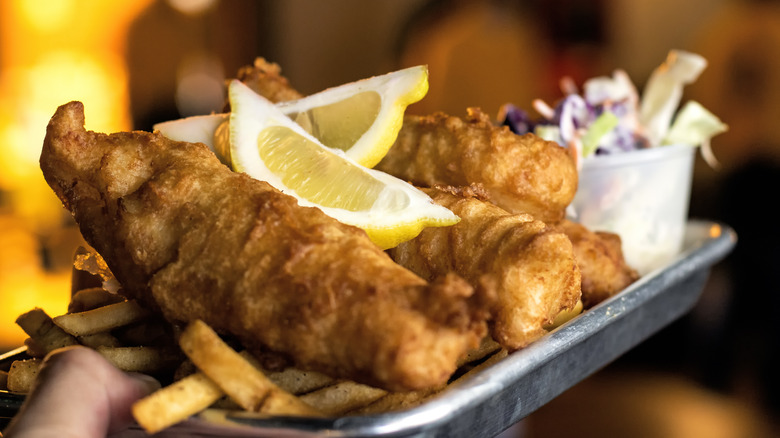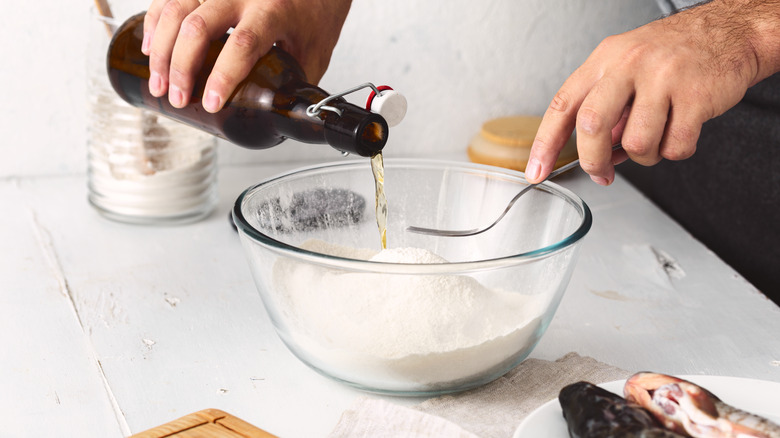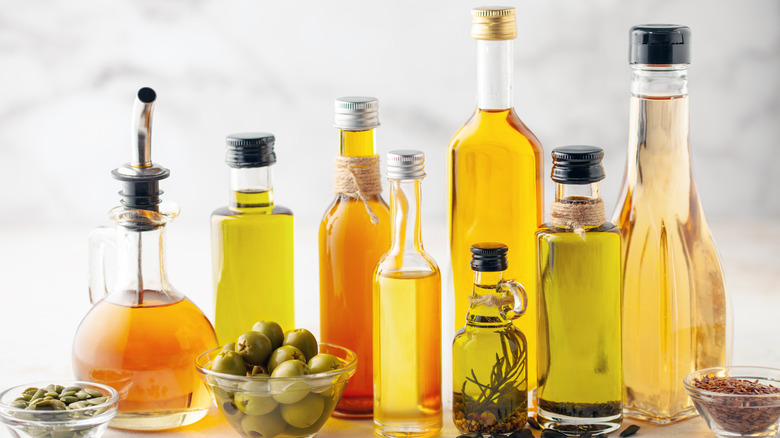The Best Way To Batter Fried Fish So It Won't Fall Apart
Golden brown and beer-battered, fried fish is a favorite when it comes to comfort food, but sometimes it can be a challenge for home chefs to replicate the deliciously crunchy breading without it falling apart. Whether it's pub-style fish and chips or a classic fried fish sandwich, the trick is in the prep — and in striking the perfect consistency with the batter so it sticks to the filets when fried.
Before you even get to battering, the very first thing to do is to make sure your fish filets are bone dry. Ranked among the big mistakes to avoid when cooking fish, trying to batter and fry wet, slippery fish filets is near impossible. The water repels the batter and it will never stick. Use paper towels to blot away excess moisture before dredging and dipping. Thoroughly dredging the filets in either a flour or flour and cornstarch mixture will also help ensure the batter sticks nicely, because it soaks up any leftover moisture and gives the batter an even surface to stick to. Without this critical step, the batter will crumble away from the fish when fried.
Reasons your batter might fall off the fish when frying
There are a few things to troubleshoot when you run into soggy fried fish with a crust that falls apart. First is the consistency of your batter. You want to be sure your batter isn't too wet and heavy or else the weight of it will separate it from the protein when frying. Using a beer-batter means you'll end up with a light and flavorful result thanks to the carbonation from the beer. Shake off the excess batter before placing the fish in the fry oil. The extra batter will only serve to weigh down the coating.
Another reason for batter with poor adherence could be that the fry oil is at the wrong temperature. The batter will absorb too much oil, become soggy, and peel away from the fish if the oil is too cold. If the oil is too hot, the batter will cook too quickly and separate from the fish. Shoot for fry oil between 350 degrees Fahrenheit and 375 degrees Fahrenheit for crispy, well-adhered results.
Best oil to use for frying fish
Speaking of oil, there are certain kinds that are better to use for this than others. The best kinds of oils to use for deep-frying fish are ones with high smoke points and subtle flavors that won't throw off the balance or interfere with your main dish. Canola, vegetable, or even safflower oil come to mind. You can also always add an oil with a higher smoke point to a fat with a flavor profile you enjoy and get the best of both worlds. For example, you can fry fish in bacon grease combined with some canola oil.
Disposing of that used cooking oil can present a bit of a challenge, though. After you've crisped up some perfectly crunchy fish filets with a crust that is nice and stuck-on, you can't just pour the hot oil down the sink drain. However, you can wait for it to cool and pour it into a sealed container before tossing in the trash. If you don't want it to go to waste, you can take it to a recycling center or make homemade bird seed balls.


